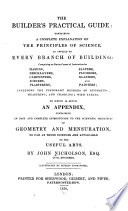 | John Nicholson (Civil engineer) - Building - 1830 - 240 pages
...AB has been subtracted. 3 I 189 Prob. 4. To find the Area of aTrapezoid. Multiply the sum of the two parallel sides by the perpendicular distance between them, and half the product will be the area. Ex. In a trapezoid, the parallel sides are AB 7, and CD 12, and the perpendicular distance AP or CN... | |
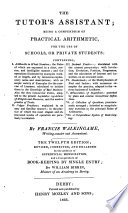 | Francis Walkingame - 1833 - 204 pages
...area. D. Fig. 5. В DE + BF x AC That is, ! = the area. For a trapezoid. Multiply the sum of the two parallel sides by the perpendicular distance between them ; and half the product will be the area. (1) How many square yards of paving are in the trapezium, whose diagonal is 65 feet, and the perpendiculars... | |
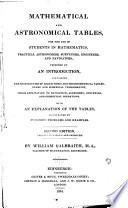 | William Galbraith - Astronomy - 1834 - 454 pages
...Trapezium. — Multiply the base into half the sum of the perpendiculars. 4. Trapezoid. — Multiply half the sum of the parallel sides by the perpendicular distance between them. fi. Irregular Polygon. — Divide it into triangles, find their areas, the sum of these will be the... | |
 | John Bonnycastle - Measurement - 1835 - 308 pages
...PROBLEM VI. To find the area of a trapezoid, or a quadrangle, two of whose opposite sides are parallel. RULE.* Multiply the sum of the parallel sides by the...between them, and half the product will be the area. EXAMPLES. 1. Required the area of the trapezoid ABCD, whose sides AB and DC are 321.51 and 214.24,... | |
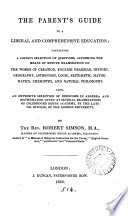 | Robert Simson (master of Colebrooke house acad, Islington.) - 1838 - 206 pages
...16s + 122 = 20, the length of the hypotenuse. HoW do you find the area of a trapezoid ? Multiply half the sum of the parallel sides by the perpendicular distance between them, and the product will be the area of the trapezoid. What is the area of a trapezoid, its parallel sides... | |
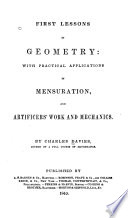 | Charles Davies - Geometrical drawing - 1840 - 264 pages
...required the breadth of the street. Ans. 77,8875 feet, PROBLEM VI. 13. To find the area of a trapezoid. RULE. Multiply the sum of the parallel sides by the perpendicular distance between them, and then divide the product by two : — the quotient will be the area. EXAMPLES. DO 1. Required the area... | |
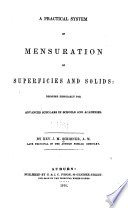 | J. M. Scribner - Measurement - 1844 - 130 pages
...2 R. PROBLEM IV. To find the area of a Trapezoid. ' ART. 12. Rule. — Multiply the sum of the two parallel sides by the perpendicular distance between them, and half the product will be the area. Ex. 1. Required the area of the trape- D c zoid ABCD, having given .45=321.51 feet, DC=2 14.24 feet,... | |
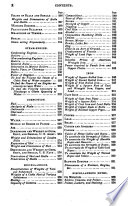 | Charles Haynes Haswell - Engineering - 1844 - 298 pages
...the Area of a, Trapezoid — fig. 9. RULE. — Multiply the sum of the parallel sides a 4, dc, by ah, the perpendicular distance between them, and half the product will be the area. OF REGULAR POLYGONS. RULE. — Multiply half the perimeter of the figure by the perpendicular, falling... | |
 | Scottish school-book assoc - 1845 - 444 pages
...144 acres, 0 roods, 191M poles. PROBLEM III. To find the area of a trapezoid. RULE. Multiply Jtalf the sum of the parallel sides by the perpendicular distance between them, and the product will be the area, (Geo. Prop. 33). EXAMPLE. What is the area of a trapezoid, its parallel... | |
 | Charles Davies - Geometrical drawing - 1846 - 254 pages
...chains? Ans. 14 A. 3 R. 30 P +. AREA OF THE TRAPEZOID. 31. How do you find the area of a trapezoid? Multiply the sum of the parallel sides by the perpendicular distance between them, and then divide the product by two : the quotient will be the area. EXAMPLES. 1. Required the area of the... | |
| |